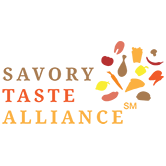How is yeast extract made?
Yeast is a natural ingredient, occurring in nature for millions of years. However, the discovery of developing yeast extract from yeast and applying it as an ingredient in foods only began in the 20th century. Yeast extract came to market in the 1950s and it did not take long for its rich and natural flavors to catch the attention of food suppliers worldwide.
Since yeast has been a consistent ingredient in many foods and beverages including beer, wine, and bread for centuries, the process of making yeast extract is short and simple, starting with brewer’s, baker’s or torula yeast.
The stages
- Fermentation- Starting with yeast, sugar is added and then heated to around 30°C/86°F allowing it grow. The resulting mixture is known as “yeast cream.”
- Breakage- The mixture is then heated further, to around 40°C, at which point the cell wall starts to disintegrate and the inner enzymes breakdown the proteins and other macromolecules, resulting in a liquid mixture that contains tasty components as well as nutrients.
- Centrifugation- During this phase the remaining cell walls are removed through centrifugation, which allows the cell walls to separate from the nutrients and tasty components. This turns the creamy yeast mixture into a flavorful, liquid form of yeast extract and preserves the largest part of the initial nutrients of yeast.
- Evaporation & Concentration- Depending on its intended usage, the liquid yeast extract is then dried into a paste or powdered form.
Yeast extract can be purchased in three forms: liquid, paste or powder. This aromatic ingredient can be used in various applications to develop more flavorful food recipes.
Depending on the particular yeast extract as well as its use and interaction with other ingredients, the flavor it provides might vary from buttery to roasted, umami, grilled, cheesy or fatty. With its rich flavor, as well as its other benefits as an ingredient, yeast extract truly is one of the most versatile ingredients.

